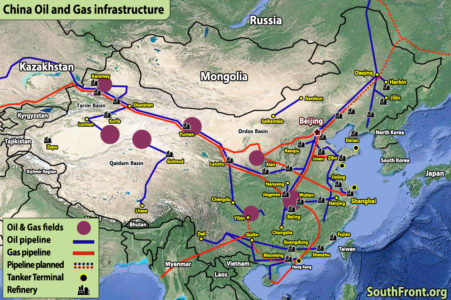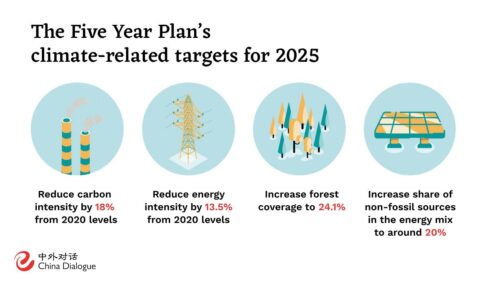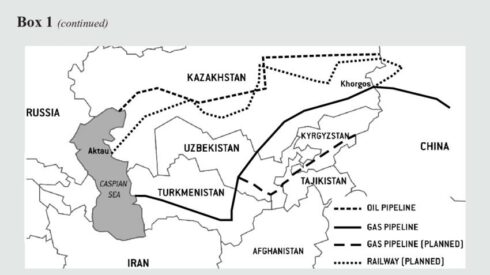
Illustrative Image
DEAR FRIENDS. IF YOU LIKE THIS TYPE OF CONTENT, SUPPORT SOUTHFRONT WORK :
BITCOIN: bc1qv7k70u2zynvem59u88ctdlaw7hc735d8xep9rq
BITCOIN CASH: qzjv8hrdvz6edu4gkzpnd4w6jc7zf296g5e9kkq4lx
PAYPAL, WESTERN UNION etc: write to info@southfront.org , southfront@list.ru
You can read this article in German: LINK
Being the fastest growing economy with the largest real sector in the world, the People’s Republic of China (PRC) risks to face the most serious energy crisis in its modern history, while Central Asia, which is a key region for Beijing’s energy sector, tends to a geopolitical crisis.
Over the past 5 years, the Chinese government has become seriously concerned about energy consumption for several reasons.
Firstly, the public turned out to be aware of the impact of the rapid growth of the national economy in the late nineties and early noughties on the environment, which worsened the living conditions of the population.
Secondly, China is actively innovating within the transition from an industrial to a post-industrial economy, with an emphasis on the digital and financial sectors, which affects the structure of energy consumption.
The policy in this direction was formalized within the framework of the 13th Five-Year Energy Development Plan, according to which China is determined to change the structure of energy generation towards cleaner sources and comply with the Paris Agreement.

An example of China’s environmental policy
However, today this strategy poses more threats to China than it seems. According to the China’s General Administration of Customs, in the period of January to August 2021, the cost of Russian oil purchasing increased by 30.4 percent, while gas and coal futures rose even more. China has imposed a ban on energy imports from Australia, a key supplier to the regional market. The region lacks a developed logistics system, there are few pipelines that provide stable contracts, and tanker shipments are less profitable and riskier, taking int o account the case of the container ship Ever Given in the Suez Canal in late March this year.
Today, the PRC economy is not in the best position to face the prospect of a power shortage. The Washington Post reports that Evergrande, one of the largest real estate developers in China, is nearing default, being unable to repay $300 billion of debt. This default threatens to bring down the entire Chinese economy.
China was able to predict the possible risks linked to the current situation in the global energy market, and for this reason, it pays special attention to the Central Asian region. For China, this territory is primarily an opportunity to diversify energy risks through the supply of hydrocarbons: Turkmenistan can be mentioned as the prominent supplier of pipeline gas to China (15.95 million tons worth $4.2 billion in January-August), and Kazakhstan ranks third (3.17 million tons worth $723 million). For this reason, Central Asia is now one of the most important directions of China’s investment policy, including logistics and extractive industries among the priority sectors. Great hopes are laid on the region in terms of developing the “Belt and Road” concept. Thanks to its exceptional role in the inflow of investment in the former southern Soviet republics, China has gained enormous influence there, but is this enough for the diversification?

Map of the newly built and planned pipelines and railways in Central Asia
The problem in this case relates to the extremely low standards of living and economic development of the Central Asian countries, excluding Kazakhstan, which is confirmed by massive labor migration to Russia. The same factor, on the one hand, ensures the loyalty of local elites to their creditor, Beijing, but on the other hand, it determines the “explosive” regional instability. The poor population, who see no prospects for themselves, is fertile ground for the spread of radical Islamism, for the work of recruiters of terrorist groups, along with the general deterioration of the security situation. The situation is not improved by Central Asian drug trafficking and smuggling through the countries of the region.
We should not rule out the role of the United States in a possible escalation of tensions in the future, the United States may indirectly carry out provocations in Afghanistan or in neighboring territories to bring the conflict outside the country. The target in this case will be Chinese energy infrastructure projects in Central Asia to undermine its position in the confrontation with the Western coalition.
The establishment of the Taliban regime in Afghanistan seems extremely alarming against such a background. It should be recognized that the turmoil in Afghanistan is not a single country event, it seems to be a powerful signal for all inhabitants of Central Asia. Even if the situation is now localized as much as possible, the destructive processes in the region have already begun. By the way, according to the latest data, even this condition is highly questionable: threats are heard from Kabul towards the Tajik government because of its support for the Panjsher resistance.
Any destabilization is a threat to the Chinese investments, which are making attempts to avoid the upcoming energy crisis, and there is also the relatively shaky Xinjiang-Uygur Autonomous Region on Chinese territory itself. Therefore, of course, China got involved in resolving the situation in Central Asia, even holding talks with representatives of the banned group. In the future, considering some new projects of economic cooperation, China will continue its strategy of “paying off” local elites, seeking to achieve political stability in the region. So far, the elites themselves, including the new regime in Kabul, have expressed their interest, but whether this will be enough to stop destabilization is a complicated question.
Summing up, there is a need to develop an independent security strategy for China in Central Asia, where a significant role is likely to be assigned to the dialogue with Russia as the guarantor of security in the Eurasian space. In the nearest future, China will be consistently dealing with this issue, because it has no alternatives to energy carriers from Central Asia and does not expect them, while the painful consequences of the energy transition, the soaring prices of hydrocarbons and the consolidation of the Western coalition against China in the Indo-Pacific region, which is clearly expressed in the recent formation of the AUKUS block and the QUAD agreement, are seen on the horizon.
We should also expect China’s infrastructure policy to intensify. China will again follow the strategy of risk minimization and build communications for the transit of energy resources through the Eurasian space, new pipelines may be built, and Beijing’s diplomatic efforts will be thrown to ensure the safety of these very projects.







